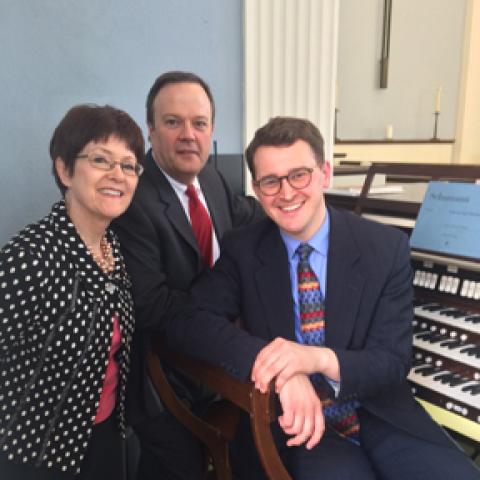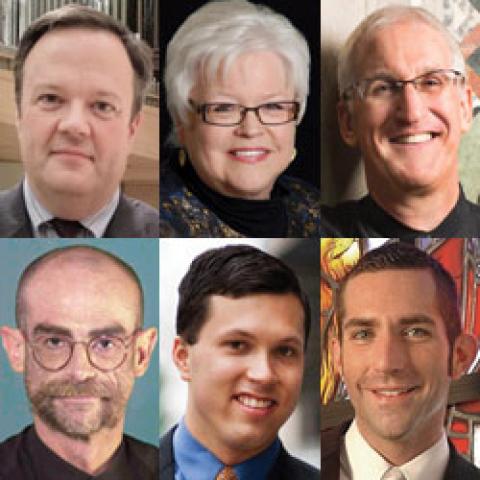
In January 2015, The Diapason partnered with the Chicago and Fox Valley chapters of the American Guild of Organists and the Chicago-Midwest Chapter of the Organ Historical Society in presenting a Midwinter Pipe Organ Conclave, a two-day event of recitals, lectures, and workshops in La Grange, Illinois. In 2016, our team, now joined by the North Shore AGO chapter and the Music Institute of Chicago, will celebrate the sesquicentennial of the birth of one of America’s best-known organ builders, Ernest M. Skinner (1866–1960). Our conference will take place April 24–25 in Evanston, Illinois, a suburb immediately north of the city of Chicago. Subscribers of The Diapason are invited to join us; those traveling from a distance will find Evanston has easy access to both of Chicago’s airports (O’Hare and Midway) as well as the many interstate highways that lead to our metropolitan area. There are several hotels a short distance from downtown Evanston.
The conference opens Sunday evening, April 24, with a concert by Chicago’s premiere professional chamber choir, Bella Voce, in historic St. Luke’s Episcopal Church. The choir’s program, “Faire Is the Heaven,” will feature Anglican masterpieces for choir and organ by William Harris, William Walton, H. Balfour Gardiner, and Herbert Howells. The award-winning group, founded in 1982 as His Majestie’s Clerkes, has recordings available on the Centaur, Harmonia Mundi, Narada, and Cedille labels. Andrew Lewis is artistic director of Bella Voce, as well as choirmaster for St. Luke’s Church.
The gothic architecture of St. Luke’s Church is one of the ecclesiastical jewels of the Chicago region. Designed by John Sutcliffe, construction for the building began in 1906, and the nave was finished some eight years later. In 1922, the Skinner Organ Company installed its Opus 327, a large four-manual organ. In the 1990s, the organ was restored by the A. Thompson-Allen Company of New Haven, Connecticut. The organ will be featured during the Bella Voce concert.
Monday morning, April 25, opens with a lecture by Stephen Schnurr at First Congregational Church. Editor-at-large for The Diapason and director of music for St. Paul Catholic Church of Valparaiso, Indiana, Schnurr will discuss the work of Ernest Skinner in Chicago.
Later that morning, Andrew Schaeffer will present a recital in the sanctuary of First Congregational Church. The building, finished in 1927 to the designs Tallmadge & Watson, one of Chicago’s premier firms of that era for Protestant churches, is distinctive for its American Colonial style. Schaeffer will play Skinner Organ Company Opus 616, a three-manual, 32-rank organ. A Chicago native and one of The Diapason’s “20 under 30” Class of 2015, Schaeffer is working on a Doctor of Musical Arts degree in organ performance at the University of Oklahoma.
After a catered luncheon, we will then hear a lecture by Joyce Robinson, editorial director and publisher of The Diapason. Robinson’s lecture will focus on the presence of Ernest M. Skinner in The Diapason, including his many letters and articles.
This will be followed by an organ crawl and open console, where registrants will be able to experience first-hand the work of Skinner within a walking distance of First Congregational Church. A short distance across Raymond Park is the Music Institute of Chicago, built as First Church of Christ, Scientist. Designed by Chicago’s Solon Spencer Beman, the neo-Classical building is home to the 550-seat Nichols Concert Hall. There we will visit the oldest playable Skinner organ in Illinois, Ernest M. Skinner Company Opus 208, a three-manual organ. A little further distant, Opus 327 at St. Luke’s Episcopal Church will also be available for a visit.
We will all gather once more in the nave of the First Congregational Church for our final event, a recital by David Jonies. Jonies is associate director of music for the Cathedral of the Holy Name in downtown Chicago.
Registration for the entire conference, including Monday’s luncheon, is only $70. We are sure you will want to join us for this springtime event of music and learning! To register, visit www.skinner2016.org.




